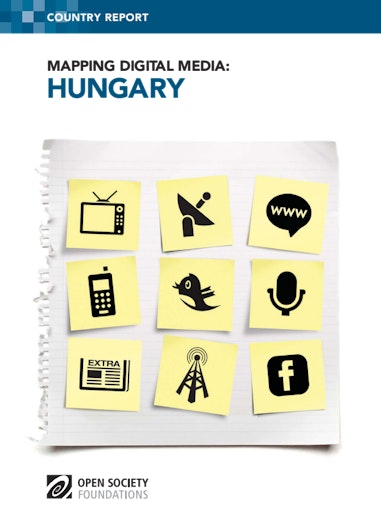The Mapping Digital Media project examines the global opportunities and risks created by the transition from traditional to digital media. Covering 60 countries, the project examines how these changes affect the core democratic service that any media system should provide: news about political, economic, and social affairs.
Media debate in Hungary has been dominated since mid-2010 by a new and far-reaching package of media laws, referred to collectively as the 2010 media regulation. Ostensibly enacted to bring the country’s legal framework into line with the needs of the digital era, these media laws have profound implications for nearly all aspects of this report—ranging from the conditions and timetable for the digital switch-over, to the availability of unbiased and diverse information, to journalists’ working practices.
Adding to the uncertainty generated by these laws are their frequent modifications; several websites and at least one organization have been created solely for the purpose of monitoring and recording the amendments.
One of the most significant and far-reaching changes introduced by the regulation is an overhaul of the public broadcasting system. Three separate public broadcasters have been consolidated into a single structure, creating a new supervisory body, the Media Service Support and Asset Management Fund, which took overall the broadcasters’ assets and most of their staff, and is responsible for producing public service programs.The directors of the broadcasters and of the fund are appointed by the Media Council.
All forms of expression are threatened by the new regulation’s broadening of all content provisions and applying these to “printed press materials” (including written products of daily print and online news portals), where spectrum scarcity does not exist to justify any content provisions beyond the bare minimum consistent with international norms.
Among the recommendations suggested by this report are the introduction of a new set of media laws, informed by extensive public consultation; reforming spectrum allocation policy to establish specific and transparent criteria; making the tender applications public; and taking spectrum allocation out of the hands of the media authority. Further recommendations include the abolition of the registry of online media outlets introduced by the 2010 law, and a full provision on source protection, significantly broadening the December 2011 ruling by the Constitutional Court.
Download
-
Mapping Digital Media: Hungary (522.98 Kb pdf file)
Download the complete 108-page report.
-
A Digitális Média Feltérképezése: Magyarország (510.85 Kb pdf file)
Download the 106-page report in Hungarian.
Read more
Voices
What Does Independent Journalism Look Like in the Digital Age?

Journalists and media organizations can find themselves repressed because of inadequate or deliberately repressive policy. Mapping Digital Media examines the situation in 56 countries.
Voices
Does Digital Media Mean Better Media?
From Montenegro to Nicaragua to China to Egypt, has digital media improved access to good-quality journalism?
Voices
The Impact of Digital Media on Sweden
Sweden offers an intriguing test case for studying the impact of media digitization on journalism and democracy.
